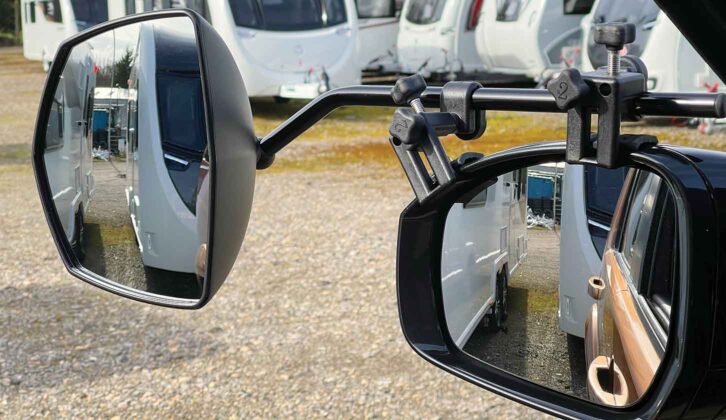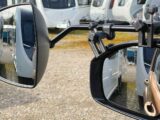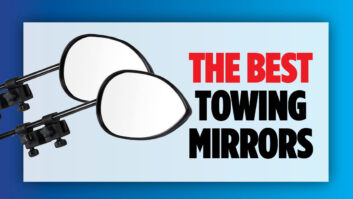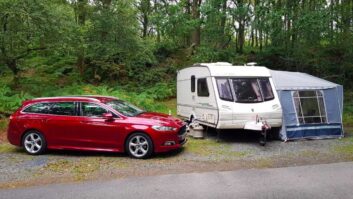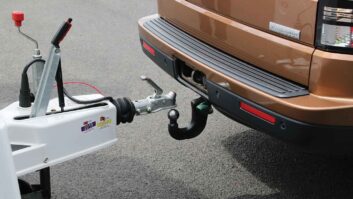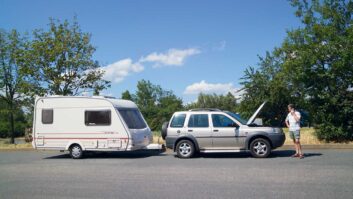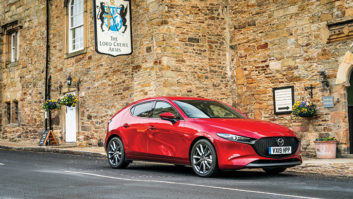Towing safely poses all sorts of extra challenges for drivers. Not least among these is seeing what’s behind you when there’s a caravan blocking the way. That’s why choosing towing mirrors is essential with almost all car and caravan combinations.
Do I need towing mirrors?
Almost certainly. Although there’s no law requiring the specific use of extension mirrors when towing, you must be able to see four metres out from the caravan, 20 metres behind the driver.
Unless you have a very wide tow car and an unusually narrow caravan, this isn’t possible without extension mirrors, so you will, in effect, need them to stay legal.
The mirrors shouldn’t extend more than 20-25cm beyond the overall width of the car and the caravan (depending on when they were designed), which is why you need to remember to take them off once you arrive at your campsite, before you next drive without the caravan in tow.
What makes towing mirrors so important?
The law around having adequate vision while driving is there to keep us all safe. Quite simply, you can’t see enough of the road behind you and to the side without the use of extension mirrors.
Without those towing mirrors, the van creates a large blind spot, in which other road users won’t be visible. Overtaking cars and motorbikes may not appear in the car’s mirrors until they are already alongside the caravan, whereas with correctly adjusted extension mirrors, you can see them in plenty of time to make safe decisions about when to change lanes.
Some caravanners believe that towing mirrors are unnecessary, but when you think about the benefits versus the small cost involved – not to mention the possible legal repercussions of not using them – we can’t see why anyone would run the risk of towing a caravan without them.
What types of mirror are there?
When you’re choosing your towing mirrors, there are a number of different types available. Although they all do much the same job, they fit to your tow car in different ways. Some of them use suction cups to attach to the car’s mirror. These will move with the mirror to fine-tune the field of vision provided. The downside to this style of mirror is that it partially blocks the view that the car’s mirrors provide. Many mirrors at the budget end of the market use rubber straps. The best towing mirrors should provide a reasonably secure fit and can be adjusted to suit the various different shapes and sizes of car mirror.
The most common kind of extension mirror uses clamps to attach to the car’s mirror housing. Deployed correctly, these mirrors can provide a secure fit and a clear view, with little vibration. However, some heavily cowled housings can make fitting this type of mirror rather difficult.
If you are feeling flush, you can buy mirrors that adjust electrically via remote control, although you might find it hard to justify the extra cost for just a little more convenience.
One pair that our reviewer, Nigel Hutson rated highly was the Milenco Grand Aero Platinum towing mirrors, a pair that proved to be stable and provided minimum vibration when put to the test.
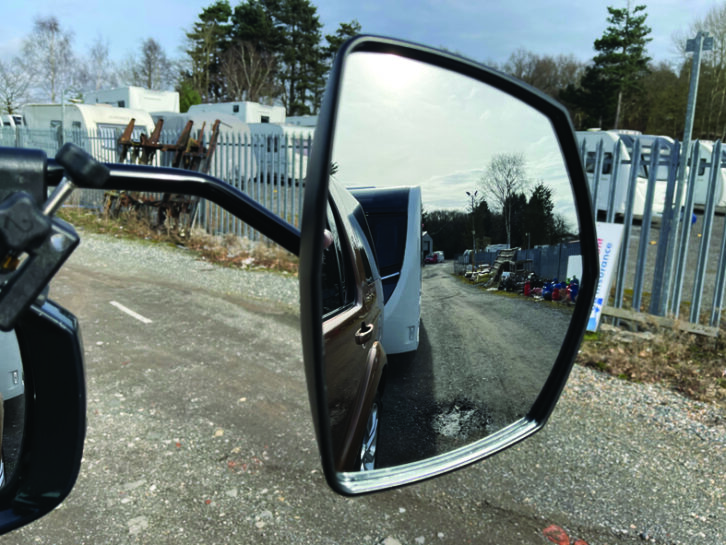
Convex or flat mirrors?
Some tow car drivers get very animated when it comes to choosing between flat or convex mirrors. Both can be used safely and legally, and there are also pros and cons to both types.
Convex mirrors have a curved surface, to provide a wider field of vision. On the face of it, this seems like a good thing, but the downside is that another vehicle could actually be closer to you than it appears. Flat mirrors have a narrower field of view, but without any distortion.
Our preference is for flat mirrors with a large surface area, but some caravanners prefer a flat mirror on the driver’s side and a convex mirror on the passenger side.
We also think that the mirror being fitted and correctly adjusted is more important than whether it is convex or flat.
How to fit towing mirrors
Instructions will vary, depending on the type and make of mirror, but as a rule, you want to make sure the car mirror housing is clean before you start.
Grit and dirt trapped beneath a strap or clamp could damage the car mirror’s finish, or cause the extension mirror to loosen.
We almost always use clamp-on Milenco mirrors. The manufacturer recommends fitting the clamps first, ensuring the wedge is fully inserted between the glass and the housing, then tightening up the screw to ensure a snug and secure fit.
Only when the clamps are in place should you slide the mirror arm into position. This way, the clamps don’t take the weight of the mirror until they are tightly in place.
Make sure your car and caravan are in a straight line, then adjust the mirrors so you can see the corner of the caravan in the inside edge of the mirror while sitting in your normal driving position.
You need to be able to see the sides of the caravan, so you can judge the relative position of other vehicles. Make sure you don’t have to lean to one side to see clearly.
What if the mirror won’t fit?
Modern car mirror housings are often heavily sculpted for aerodynamics and looks. This can make fitting extension mirrors a very tricky matter.
Sometimes the bottom edge of the car mirror housing is less heavily shaped than the top, in which case, you could also try fitting the mirror to the underside of the housing instead.
We’ve heard from readers who have used model-specific towing mirrors from the likes of EMUK, which fit perfectly because they have been specifically designed to match the mirror shape – but such mirrors are usually rather expensive.
Conclusion
For pretty much every type of car and caravan combination, extension mirrors are essential for safe and legal towing.
If possible, try before you buy, to make sure they fit your car’s mirrors, and then use them every time you tow.
You have your extension mirrors sorted – it’s now time to choose a sat-nav! Our guide to the best caravan sat-navs will help you pick out the best device for you.
Written with contributions from Nigel Hutson.
If you liked this, why not read these:
- We talk you through how to reverse a caravan
- We explain how you can deal with a snaking caravan
- We take a look at caravan weights
If you’ve enjoyed reading this article, why not get the latest news, reviews and features delivered direct to your door or inbox every month. Take advantage of our brilliant Practical Caravan magazine SUBSCRIBERS’ OFFER and SIGN UP TO OUR NEWSLETTER for regular weekly updates on all things caravan related.
